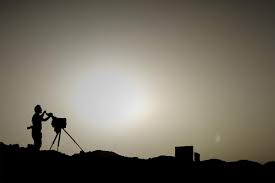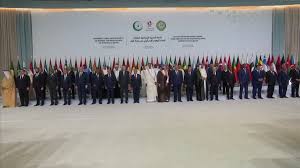
For Associated Press photographer Rodrigo Abd, a main attraction of working with a traditional Afghan box camera is the intimacy it provides with his subjects, and the slow pace that allows for a unique window into daily life.
In the years after the 2001 U.S. invasion that toppled the Taliban, the Argentine photographer spent months on assignment in Afghanistan and developed a deep affection for the country and its people. He also was fascinated by what was then a common sight: urban street photographers who made their living snapping cheap portraits, mostly for identity documents, using old-style wooden box cameras. Abd learned how to use what in Dari is called a kamra-e-faroee, or “instant camera,” a handmade box on a tripod that combines a simple camera and darkroom in one.
“I fell in love with this way of photographing, going back to the most primitive act of taking photos, that long time spent looking at faces, details, textures, landscapes, both urban and rural,” Abd says.
As cellphone cameras and digital technology spread across Afghanistan, the old cameras fell out of favor and had long disappeared from the streets by the time U.S. troops withdrew after 20 years and the Taliban swept back to power in August 2021.
Abd had an idea: to return to the country with a traditional Afghan-style box camera to document how daily life has and hasn’t changed in the two years since the Taliban returned.
Afghanistan has become globally isolated since the Taliban reimposed its strict interpretation of Islam, virtually erasing women from public life and banning the depiction of human faces in billboards, shop windows or posters. But Abd found that using the old camera to take portraits somehow disarmed his subjects, including foot soldiers and even some Taliban officials. The appearance of a now-obsolete device so familiar to many was both novel and nostalgic.
The time required for a subject to sit still and pose for the old-style camera creates a special kind of intimacy with the photographer.
“I can connect sometimes better with that camera than with a digital one, because of the way people look at the camera, that moment that is created between the photographer and the person that is sitting in front of the camera,” Abd says.
The exact origins of the camera are unclear, although similar wooden cameras have been used around the world. In Afghanistan it is believed to date back at least to the 1950s. Each camera is custom-made, so photographers chose their lenses. Most were shutterless, with the photographer briefly removing the lens cap to let in the required amount of light — a method that required skill and experience.
The device is entirely manual, and the Afghan version includes a cloth sleeve on the side that the photographer uses to access the interior and develop the black-and-white photos by hand. The original, negative image is developed directly on paper using chemicals stored inside the camera. The negative print is then washed of excess chemicals in a bucket of water and attached to the front of the camera, where it’s rephotographed to create a “positive” image.
Former kamra-e-faoree photographer Lutfullah Habibzadeh, 72, is happy to see a fellow photographer, a foreigner no less, arrive at his Kabul home with a wooden camera of his own — not as beautifully decorated, perhaps — but a kindred spirit nonetheless.
He’s somewhat less impressed by the speed — or lack thereof — of the foreign photographer’s work. Abd, more used to working with digital cameras, was slow as he tinkered with the focus.
“The customer will fall asleep if he comes to you to get his picture taken,” Habibzadeh chuckled as he sat for his portrait.




